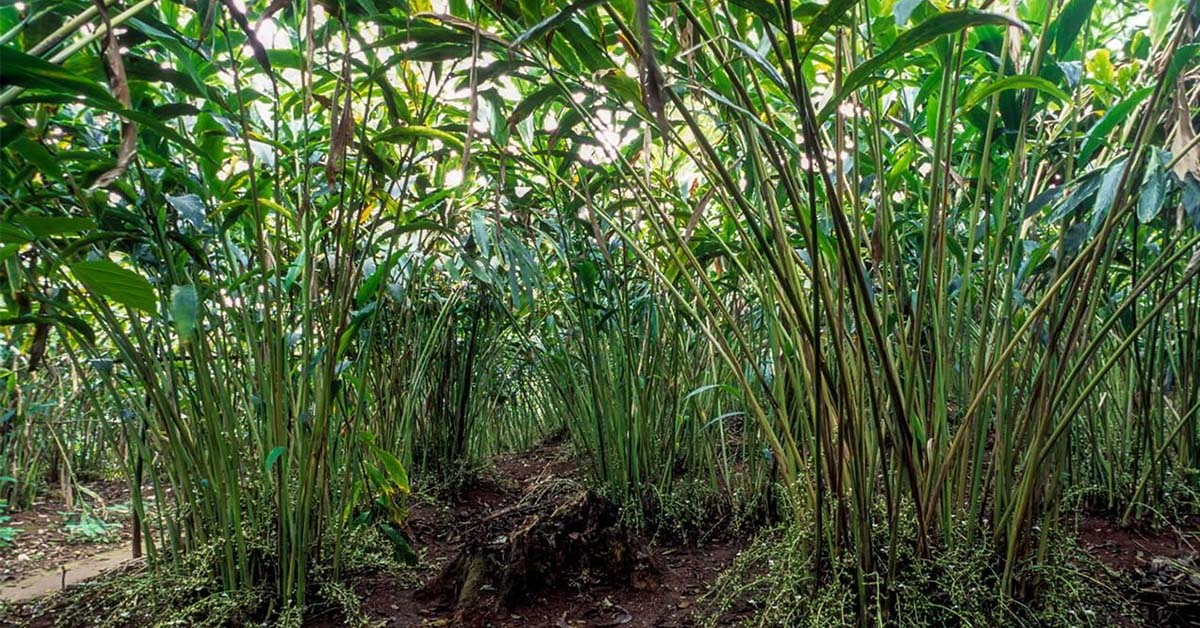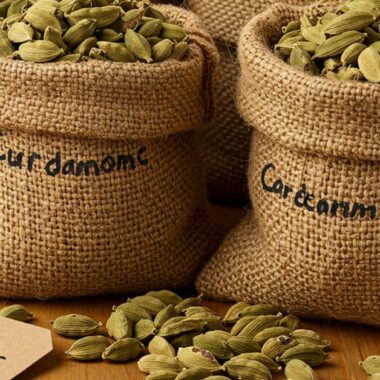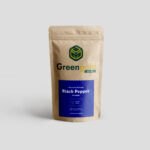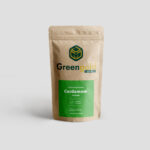The small green cardamom plant (Elettaria cardamomum) is a tropical, aromatic herb that belongs to the ginger family (Zingiberaceae). It is renowned for its fragrant seeds, which are used as a spice in culinary dishes, traditional medicine, and beverages worldwide. Often referred to as the “Queen of Spices,” cardamom has been cultivated for centuries for its unique flavor and medicinal properties.
Botanical Characteristics
Cardamom is a perennial herbaceous plant that thrives in warm, humid climates. It grows well in shaded, tropical forests and is native to the Western Ghats of India and Sri Lanka. The plant features the following key characteristics:
- Leaves: Long, lance-shaped, and dark green, reaching up to 60 cm in length.
- Stems: The plant grows through underground rhizomes and produces leafy shoots that can reach heights of 2 to 4 meters.
- Flowers: Small, pale green to yellowish flowers with purple markings, which bloom in clusters.
- Fruits: The most valued part, the fruits are small, green, and capsule-like, containing tiny black or brown seeds.
Ideal Growing Conditions
To successfully cultivate small green cardamom, specific conditions are required:
- Climate: Prefers warm, humid environments with temperatures between 15°C and 35°C.
- Soil: Well-drained, rich loamy or laterite soil with high organic content is ideal.
- Rainfall: Requires 1500-2500 mm of annual rainfall.
- Shade: Thrives under 50-75% shade, commonly grown beneath tree canopies in plantations.
- Altitude: Typically grows well at elevations between 600 and 1500 meters above sea level.
Propagation and Planting
Cardamom plants are primarily propagated through seeds or rhizome division.
- Seed Propagation: Seeds are collected from mature fruits, dried, and then sown in nurseries before transplantation.
- Rhizome Propagation: More commonly used by farmers, rhizomes from healthy plants are separated and replanted for faster growth.
Planting is usually done at the onset of monsoon to ensure adequate moisture. Saplings are spaced around 1.5 to 2 meters apart in rows to provide ample growth space.
Cultivation and Maintenance
Proper care is crucial for a healthy and productive cardamom plant:
- Mulching: Adding organic mulch like dry leaves or coconut husk retains soil moisture and improves fertility.
- Irrigation: Regular watering is essential, especially during dry spells.
- Weeding: Periodic removal of weeds ensures healthy plant growth.
- Fertilization: Organic compost and bio-fertilizers enhance plant nutrition, boosting yield.
- Pest and Disease Control: Common threats include thrips, root grubs, and fungal infections like rhizome rot. Organic pest control methods such as neem oil sprays are often used.
Harvesting and Processing
The small green cardamom plant takes about 2-3 years to start producing fruits. Harvesting occurs when the fruits turn slightly yellowish-green.
- Harvesting: Done manually by plucking the mature capsules.
- Drying: The capsules are washed and dried under controlled conditions to preserve flavor and aroma.
- Grading & Packaging: The dried cardamom pods are sorted based on size, color, and quality before packaging for sale.
Uses and Benefits
Cardamom is prized for its culinary and medicinal value. Some of its uses include:
- Culinary Uses: Used as a spice in curries, desserts, teas, and coffee.
- Medicinal Benefits: Aids digestion, boosts metabolism, and has anti-inflammatory properties.
- Aromatic Uses: Used in perfumes, essential oils, and herbal teas for its refreshing scent.
Conclusion
The small green cardamom plant is a valuable spice crop with diverse applications. Its cultivation requires patience, skill, and the right environmental conditions, but the rewards are immense. Whether used for its flavor or medicinal benefits, cardamom continues to be a treasured spice globally.













